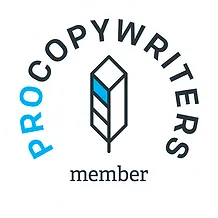Copywriters and creatives debate negativity and positivity all the time.
I’ve heard respected freelance copywriters say you should never use negative words. Never say bad. Never say never.
But most people make exceptions when it comes to certain industries. If you’re writing about health, security, or safety, emphasising the negative emotions can really help to solidify fears and drive people to take action.
The problem is it feels a bit dirty.
Just this week, I was interviewed by Glenn Fisher at All Good Copy. We talked about everything from my unusual approach to planning to my favourite words to use in copy. Then, we got onto the subject of whether negative or positive emotions work best.
So, for this Swiped post, I wanted to use one of my favourite examples that shows how people respond to a positive attitude – even if you’re talking about something that’s quite frankly terrifying.
Should You Sell With Fear?
In certain industries, selling with fear is essential. If people aren’t a bit scared, they won’t feel any pressure to act. Fear, it seems, can work.
This has a strong psychological grounding. In 2006, GL Clore and J Storbeck conducted a study in which negative recollections of an event were found to be more precise and detailed. Several psychologists suggest that negative emotions are stronger because when we feel them, we face risk. If we don’t feel them, and react, the consequences could be terrible.
That gives us a simple trick. If you scare people enough, they’ll feel your message intensely and won’t forget you easily.
So it’s with this in mind that I’ve used the fear technique to help several clients in security. They wanted potential customers to be acutely aware of the worst case scenarios, so our copy reflected that.
For one client in particular, our entire campaign was built around images of injury, damage, and devastation – and it worked.
But if you really want to motivate people, you need to heighten their anxieties, push their sense of concern, then position your brand as the answer.
It’s not enough to scare people and simply be remembered. You need to scare them, then sell something that takes the fear away.
Balancing Fear and Comfort
In most cases, you need the black and the white. You need the fear and the comfort.
But, if you’re fairly established, you can miss one side of the fear-comfort coin out.
Check out this TV ad, created by Mother, for Cancer Research’s Race for Life 2013.
As part of a hefty rebrand of what Race for Life stood for, this was attention grabbing marketing that stood out. It used language that, although hardly post-watershed, wasn’t what you expected to hear on prime time TV.
It was an advert that called women to arms, explaining what, together, they were going to do to the vile illness that is cancer.
But you already know what it does. I think it’s more useful to think about what it doesn’t do.
No Need for Negativity
Most charity ads play on the things we get concerned about. Pets being neglected. Children being abused. People starving. These problems are dramatised, emphasised, and put centre stage.
You feel the fear. Then you hear about the way you can make things a bit better.
But did the women in the Race for Life advert seem scared to you? No. They were already victorious.
Cancer is going to get what it deserves. It’s just a matter of time.
These women are empowered (as is the one token male). They’re stronger than ever, pulled together in a spirited community that won’t be defeated.
That all sounds pretty positive, doesn’t it?
This particular campaign doesn’t delve into fears and anxieties, not really. There are one or two lines that talk about lost loved-ones, but even these are given a new spin. They’re not sad laments. They’re reasons for revenge.
I know what you’re thinking – this goes against all the psychology. Don’t worry, it doesn’t.
It’s just clever advertising that lets the audience do the dirty work.
Your Audience is Already Scared
I started by telling you that prodding and poking fears makes me feel a bit dirty. That’s not to mention creating new fears. That’s an even grubbier process.
I’ll do both if I think we need them, but I’m always looking for more unusual approaches.
So what I like most about the Race for Life campaign is that it doesn’t waste time talking about fears. The audience bring those themselves.
You see, people know about breast cancer. Too many people have experienced it first hand, or seen its impact on the people they love. There’s no need to create fear, or even emphasise it. It’s already there.
The campaign still works using fear and the promise of comfort. The psychology is the same.
But this brilliant work doesn’t make things feel worse. It lets us think of the negatives, but focuses on what we can do to create a more positive outcome.
A copywriter should focus on the fix. Good copy explains the answer. Use fear if you must, but if your prospects already understand the problem, why go over the basics?
Get right to the important stuff – what you can do to help.
